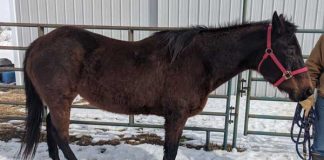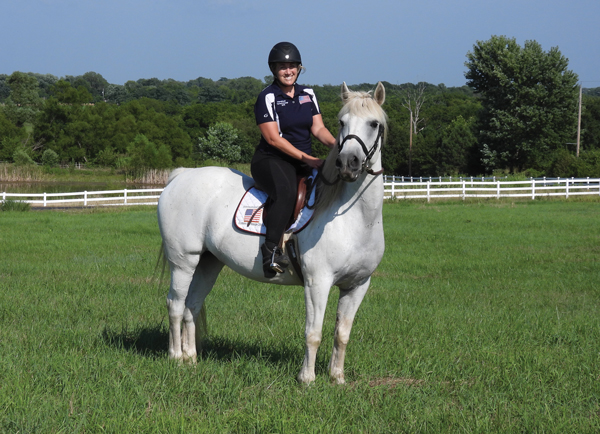
Audrey was not the most likely candidate for adoption when she arrived at This Old Horse in Hastings, Minn. The small, 6-year-old Appaloosa mare had a newborn foal at her side and was in foal for 2020 when she came to the organization. She was not only severely neglected—she was also blind. Experts debated on a prognosis for her recovery and quality of life. It was going to be hard to find someone to adopt this horse.
The path to “happily ever after” may be a little more challenging for horses like Audrey, but innovative new programs are helping a number of equine adoption organizations find homes for hard-to-adopt horses.
Online Matchmaking
The Right Horse Initiative, a program of the American Society for Prevention of Cruelty to Animals (ASPCA), is working to increase equine adoption numbers through a national network of partner organizations, including This Old Horse and more than 30 others. The group’s online adoption platform, MyRightHorse.org, helps bring adoptable horses to a broader audience, while the ASPCA Horse Adoption Express helps transfer horses between facilities to locations where there is a greater demand or to trainers who can work with the horses to make them more adoptable.
“The ‘hard-to-adopt’ horses often have to be here longer for that right person to find them,” says Amanda Mullen, director of Longmeadow Rescue Ranch, a Right Horse partner organization in Union, Mo. “We’ve found that we need to make sure to market that animal through social media, website listings, awesome photos and videos, and take them to local horse shows, if possible. There is an owner out there for every horse, and our job is to get that horse in front of as many eyes as possible.”
Ozzie is one success story from Longmeadow Rescue Ranch who benefited from increased exposure through MyRightHorse.org. Cathie Chiccine and her sister were browsing the site looking for a horse for Cathie’s sister. They filled out an application for Ozzie, a 13-year-old gelding at Longmeadow Rescue Ranch, who had been there for quite a few months waiting for his right match. Chiccine’s sister ended up falling in love with a different horse from the website, but Chiccine decided she wanted to go ahead and meet Ozzie herself, as she had recently retired her all-around horse.
The trainer at Longmeadow Rescue Ranch let Chiccine know about some of Ozzie’s behaviors and management needs that made him best suited for an experienced rider. A rider for 30 years and trainer for 20, Chiccine quickly fell in love with Ozzie and immediately recognized his potential.
As soon as she rode him, she says they fit together perfectly. The trainer and staff at Longmeadow noticed how relaxed Ozzie was with Chiccine. The pair has gone on to success in mounted games competition, where the forward-thinking Ozzie has found the perfect job for his busy mind and occasional “pony zoomies.”
“Our biggest challenge is finding adoptive homes with experienced riders,” says Mullen. “We find that a lot of people think they are experienced riders or perhaps were at some time in their lives but haven’t ridden in a very long time.”
To help remedy this, Longmeadow created a riding lesson program that helps both riders and horses gain experience, and Mullen reports that many of the lesson students go on to adopt Longmeadow horses.
Non-Riding Adopters
Redefining the market of potential adopters to be more inclusive increases the odds of placing a hard-to-adopt horse even further.
“If we target riders as our only market for adopters, unrideable horses will never be adopted,” says Nancy Turner, president and founder of This Old Horse. “But if we target horse lovers—an endless audience—then all horses are adoptable. There are lots of ways to love horses, and riding them is just one.”
By welcoming volunteers with no equestrian experience, This Old Horse has created a path that often leads to adoption. People come because they feel welcome even if they’ve never been around horses before, says Turner. And while volunteers gain experience, the horses draw them in. With education and support from the organization, they become enthusiastic about adopting a special horse of their own.
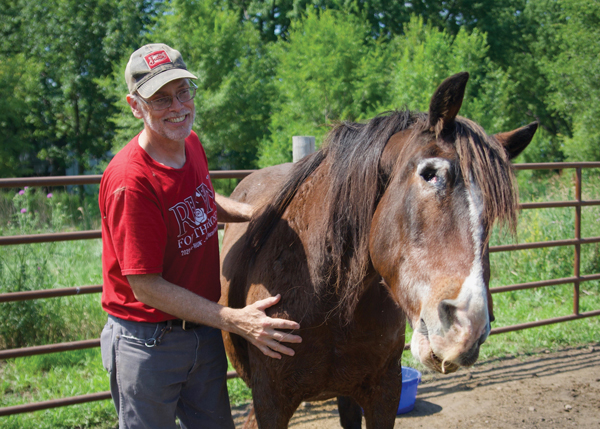
One of those volunteers that had no previous horse experience is Patrick Metzger, who adopted Gypsy, a mare who is over 30 years old, blind, and has survived a lifetime of abuse and neglect.
“I fell in love with her,” says Metzger. “I was depressed when I first came here, and she really helped. She’s a loveable horse and helps me every time I come out. In my daily life I think about Gypsy. I think of how she endures, and that gives me strength to keep going.”
Astrid, a 10-year-old Norwegian Fjord Horse with a seizure disorder, was adopted by the Teter family. They became volunteers at This Old Horse when daughter Mara participated in the organization’s 4-H Horseless Horse program.
“I don’t think the fact that she has a seizure disorder matters,” says Brenda Teter. “She’s a horse that our whole family can share and love on, and we learned a lot about how to work with her and work with the seizures. She has a great quality of life, and our family’s quality of life has improved because of her.”
When it comes to small animal adoption, no one is asked what they “do” with their pets, as Turner points out.
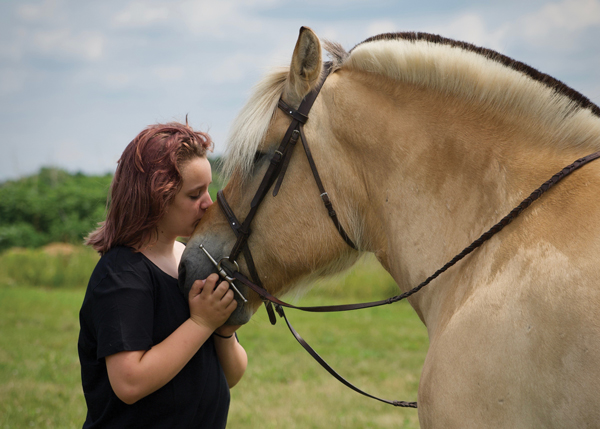
“It’s understood that it’s a relationship,” she says. “Our adopters are as quirky, unsound and imperfect as our horses, and we create a community based on kindness and compassion.”
Preparing for Ownership
Companion equines provide great opportunities to learn about horses outside of the traditional path of lessons, riding and shows, paving the way for horse lovers to become horse owners.
The Kentucky Equine Adoption Center (KyEAC) in Nicholasville, Ky., is another Right Horse partner welcoming new people to the horse world. They recently introduced an eight-week education program called Support a Special Horse (SASH) for people who are interested in becoming horse owners. Participants work with KyEAC’s companion horses and learn the basics to prepare for horse ownership: how to halter and lead a horse, care and feeding, and what you need to have a horse on your own property.
Through this program, KyEAC has already seen success for the hard-to-place horse. An older Quarter Horse gelding named Butternut who had badly foundered and takes medication daily was adopted by Katie Blair and Michael Schmitt.
“Through the SASH program he found a couple to adopt him, and he has gone on to a new home where he is taken care of and loved on and has a new purpose being a friend for this family,” says Kelli Sorg, development director at KyEAC. “They were not horse owners to begin with, but always wanted to be.”
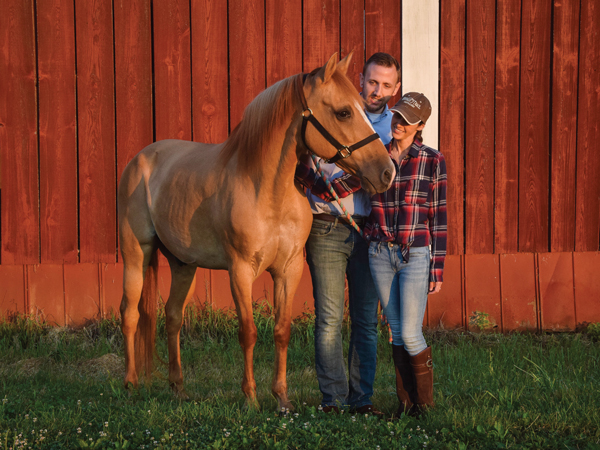
Sorg believes that non-riding horses excel at making connections, perhaps because they don’t have the stress of being in traditional work or training. One of the reasons she started the SASH program at KyEAC was to help people interested in adopting a companion horse find acceptance in the horse community—especially since most boarding barns focus on showing or riding. She wants people to know that it’s OK to just hang out with your horse or do groundwork and obstacles or play games.
“It’s calling for a change in the horse world itself to see this as not a step down,” says Sorg. “There’s just as much value being nose to nose as there is to getting up on the back of a horse.”
The Perfect Marketers
Turner believes providing access is what makes the biggest difference for hard-to-place horses so that potential adopters can get to know them. They don’t have to be the perfect horse to be the perfect horse for you, she says.
“For a horse that is old, blind, needs medication—it’s not much of a selling point!” acknowledges Turner. “But if we provide access to horses, they do their own marketing just by being wonderful. When you see them and work with them and volunteer with them, they become so endearing. There is an old saying, ‘Give a horse its head and it will find its way home.’ We create a space for it to happen, and the horses do the rest.”
This article about hard-to-adopt horses appeared in the October 2021 issue of Horse Illustrated magazine. Click here to subscribe!




